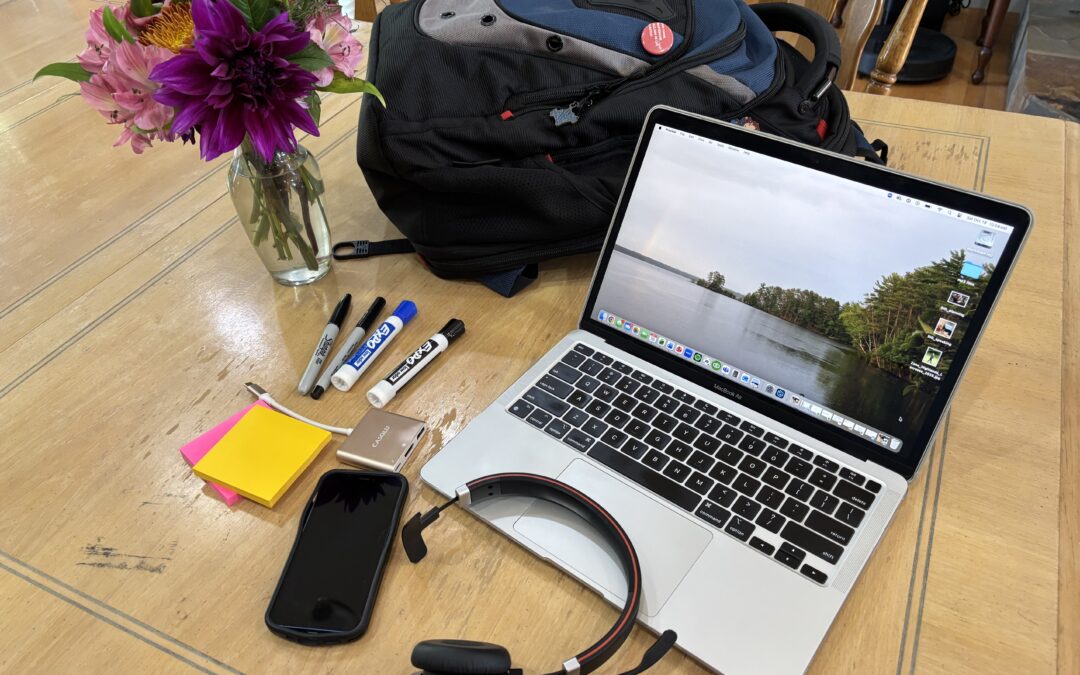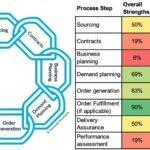People often tell me starting their own business is their dream. They imagine a world with fewer meetings, more control over their own schedule, and being their own boss. While all these things are somewhat true, there’s definitely a “the grass is greener” effect in this mentality. Two years ago, I didn’t know what I would do when I left corporate life unexpectedly, but I ended up starting Passwall Solutions. It’s been a journey. I don’t pretend my lessons learned are dramatically different from anyone else’s, but they are my own and today I’m sharing the good, bad, and ugly. Here are my thoughts on attitudes, the market, and technology after having been on my own for two years.
Attitude
Starting with the “grass is greener” ideal: When I’m successful and my client list is full, I have almost as many meetings as I did when I worked in the corporate world. I do have some control over my schedule, but especially if clients are in Europe or even just the east coast, I’m often up and going earlier than I would prefer. And being my own boss works fine because I’m extremely self-motivated. I have no boss and at the same time many, because every client is my boss. Helping other businesses, especially as a sole proprietor, can be extremely ebb and flow. Supply chain work in general tends to be ebb and flow, and is compounded with the peaks and valleys of consulting work. All of this is a long way to say that my attitude toward what I do has had to change in the last two years. When I wasn’t terribly busy, it used to really worry me. Then when I was busy, it made me somewhat frantic. Now I make sure I’m still talking to my network, posting articles, and otherwise keeping a consistent presence when I’m busy and when I’m less busy. When I’m less busy, I get to focus on lap swim times and getting a little ahead in writing article outlines for the busy times. I’ve learned to view each kind of workload with gratitude and more calm.
It’s important to keep a consistent level of service to clients. It takes some time to get good at working for yourself, I usually say it takes about a year to really learn any career-type role. It’s very much a “build the plane as it’s going down the runway” situation, but I learned to try to focus on the quality of my client output and result as much as possible while building. While my Supply Chain 360 assessment looks a little different than it did at the start, it’s always provided clients with a clear view of their supply chain so they can take advantage of opportunities.
I’m naturally an optimizer (it’s often what I do for clients), but I’ve learned to really lean into my continuous improvement training and inclination. This covers deciding how I spend my time, when I made purchases (I used Google Drive for the first several months until I reached a client where I really needed the tools and familiarity available to me in Excel!), and even which hotel chain I try to stay at so I can maximize my award point accumulation (which one is your favorite?).
Lastly in the category of attitude, it does help immensely to have strong support from those around me. My amazing husband picked up a full-time career outside the home to provide benefits for our family and a steady baseline income after many years of being a stay-at-home dad. His support, both emotional and financial, makes a huge difference. When I was considering going off on my own, the support of other family members, mentors and friends telling me I could do this also enabled it to happen. I still wake up most mornings and am not sure how long this will last, but knowing I have a support network around me helps me thrive and keep striving.
Market
The market for a consultant can be tricky. I was surprised by how much my role as a VP of a large US company carries a lot of weight with clients and potential clients–more than I expected it to. So if you’re still in the trenches, consider gaining a bit of rank before branching into a professional services sole proprietorship (my article on thoughts about becoming a corporate VP is here).
One of the hardest things I had to figure out was how to price my services. Two years in, I’m not sure I have this right. But I do know to price my services based on the value I bring to clients. One nice thing about being in a supply chain role is we are trained from day one to find value, calculate value (cost savings, cost avoidance, time savings, etc.) and articulate that value to a business. I typically aim for a 500% ROI, but that’s almost impossible with e-auctions because the ROI is so incredibly high. With a current client, my ROI on their e-auction program is more than 23,000%. Even accounting for all of their internal costs to stand up an e-auction program, that client’s ROI is sitting at over 6300% and still climbing only nine months into their program. It shouldn’t astonish me the value a quality e-auction program brings, but it still does.
I’ve definitely learned how important it is for the market to know who I am and what I do. In my initial coaching sessions with Consulting Success, they emphasized being able to articulate who I help with what problems, and to tell everyone I know. Most of my clients have come to me through my network one way or another, some of them from unexpected places. Part of letting people know what I do has been about learning to speak their language and talk to their problems. When I was trying to get a new corporate job, it was important to talk about my own skills and experience. But when talking to those I can help, it’s important to talk about their experiences and needs first and foremost. It has required a different way of thinking and speaking.
Early advice I received talked about me finding my niche. That is all well and good, but until my book (Transform Procurement: The Value of E-auctions) was published it was extremely hard to find the people who needed me in my niche. I also needed to find my Ikigai, which is the intersection of what the market needs, what I am good at, and what fits my purpose. I have a wide variety of experience with supply chain, especially in procurement, and so I have helped clients with process improvement, building teams, reducing costs, and of course building e-auction programs. I found I had to start more broadly and then find where I brought my clients the most value.
Technology and Equipment
In our current age, everyone is mobile and almost everyone is technology native. That means having my camera on when on video calls, even if I’m the only one who does. Connecting to people is so important, and every little bit helps. People also pick up on the fact that I’m willing to be a little bit vulnerable by having my camera on and quite literally “showing up” when I’m not visiting a client in person. I work with people all over the world regularly and I’m a believer in being visible, even when my hair’s not perfect (side note: it’s never perfect. I’m not really a person who does the “perfectly coiffed” thing).
I also need to say something about AI. Large language models (LLMs) and AI can be really helpful in any business. But part of my brand is that I am genuine. I can use AI to help, to check, or to create the crappy first draft of something, but a huge part of what I do as a sole proprietor is serve my clients as myself. They’re not paying me to put things into AI and tell them what comes out. That’s also why I write all of these articles myself. By hand. I’d rather publish them less frequently than start using AI to write them. So I’ve learned to use AI, it’s an awesome tool, but I don’t forget that it’s basically a very smart intern.
Now my list of “required equipment” for what I do. Note that I am extremely mobile when I’m working. I have two teenagers, I live in Des Moines, Iowa, so very few of my clients are actually located here, and I often find myself joining calls from a variety of spaces (airports, other people’s offices, coworking spaces, coffee shops, etc.). Here are the pieces of equipment I’ve found vital to working this way:
- A laptop. I feel like this is a “duh” moment, but it needs to be mentioned. I use a MacBook Air that’s a few years old, but because it’s a Mac it does its job well. I’ve been a Mac user as long as I can remember, although of course I’m very well versed in Windows machines.
- A work phone. Not everyone agrees with me on this one, and I may change my mind over time. But I’ve been carrying two phones for years and kind of like having a phone that I know is work-related when it rings. Because I travel a lot, I also like to have two separate networks because then I can always get a signal. I am aware this is extreme for some people, but I’ve found it works for me.
- A real, grown-up headset. I cannot emphasize this one enough. I’ve been on SO MANY calls where people are using their Airpods and no one wants to tell them how hard they are to hear. Airpods work fine for the Airpod user. They’re terrible for the rest of us. They don’t filter out background noise and have a strong tendency to die without warning. This headset is the one I use (not an affiliate link) and it’s been worth every penny. If I could change anything about it, I would enable it to connect to three devices instead of two so I could connect it to my personal phone, work phone, and laptop at the same time (yes, I’m aware I could solve this with virtual SIM cards and one phone. Maybe someday I will).
- Office flotsam. These are all the things I throw in my backpack and simply always have on me. This includes Sharpie permanent markers, dry-erase markers, post-its, and a computer adapter that goes to a variety of screen projectors. It’s extremely common for clients I visit to not have these things handy, and it keeps everything moving smoothly when I simply have them with me. No matter how nice the office is, there’s always dried out whiteboard markers or not enough post-its.
Bonus: I get a few questions about the name of my business and don’t always tell people where it comes from. My husband gets the credit for the name Passwall, and I used Solutions because I don’t like Consulting in a business name. This feels very vulnerable to put out there, but Passwall is actually a spell in the game Dungeons and Dragons. It literally creates a door in a wall where none previously existed, and I like this metaphor for what I do for clients. Supply chain can be such a wall, especially to people in operations, and I help people get through quickly, cleanly, and with minimal effort. It also helps that Passwall is pretty easy to spell and is still unique enough there aren’t a bunch of us running around. If you look at my logo, you can see it’s a bit of a doorway repeated three times as well as an interlinked chain (shout out to Doug Choi, who did an amazing job designing my logo!).
Hopefully my lessons learned in the last two years are helpful to you, whether you’re working with someone like me, considering going off on your own, or are currently running your own firm. If you’d like to talk to me about your experience, let’s chat. If you’d like to get these articles weekly straight to your inbox and never miss one, sign up for my newsletter.
My book, Transform Procurement: The Value of E-auctions is now available in ebook, paperback and even hardcover format: https://www.amazon.com/dp/B0F79T6F25




